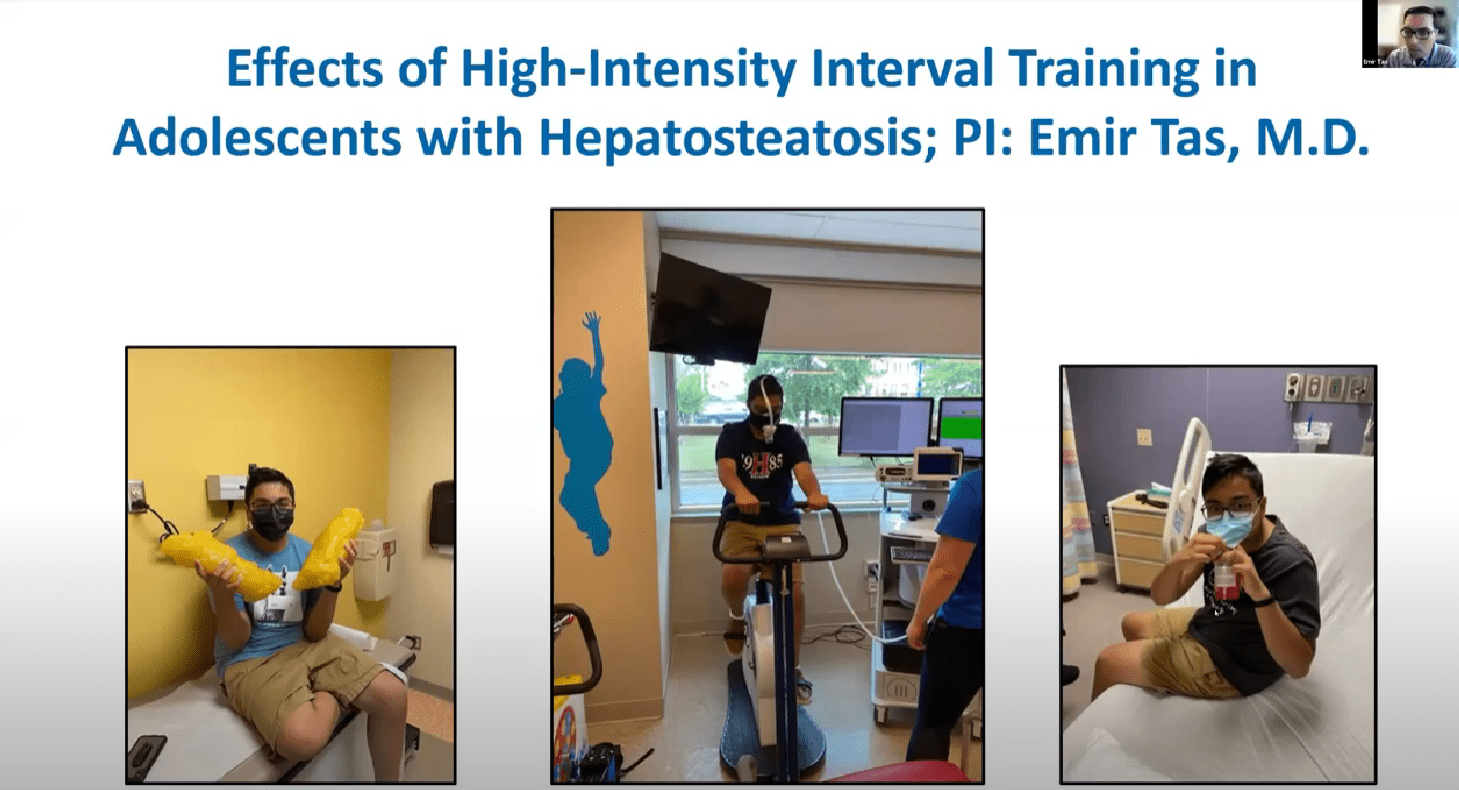UAMS Showcase of Medical Discoveries Highlights Obesity Research
| Nine obesity-focused research projects grabbed the spotlight April 6 at the UAMS Showcase of Medical Discoveries.
Hosted by Vice Chancellor for Research and Innovation Shuk-Mei Ho, Ph.D., the showcase series dates to 2012, facilitating a space for UAMS researchers to share and discuss their most exciting projects. The event was the 31st of the series, featuring some of the unique approaches being studied at UAMS to help prevent and treat obesity.
The event, presented over Zoom, featured some of the unique approaches being studied at UAMS to help prevent and treat obesity.
“Today’s topic is really outstanding,” Ho said, kicking off the two-hour event. “This research can link all of our affiliated organizations and all of our colleges and institutions together to address a very important issue in Arkansas and across the nation.”
UAMS affiliated organizations include Arkansas Children’s Research Institute, Arkansas Children’s Nutrition Center, a United States Department of Agriculture-funded center, and the Central Arkansas Veterans Healthcare System.
Ho noted that obesity is not a single disorder, but a complex chronic illness that involves genetics and other issues that have nothing to do with lifestyle, including environmental and medication-related causes.
Obesity is also a major influence in many other complex diseases such as cancer, cardiovascular disorders and diabetes.
The prevalence of obesity is a nationwide concern, but intervention is a high priority in Arkansas, which ranks ninth out of the 50 states with 36% of adults classified as obese. Intervention is not enough though. Research into preventing obesity before it takes root is just as critical.
In one presentation, Emir Tas, M.D., said a pilot study found that nonalcoholic fatty liver disease (NAFLD) is affecting 40% of obese children attending his clinical weight management program at Arkansas Children’s Hospital. His project focuses on the benefits of high-intensity interval training (HIIT) in adolescents with NAFLD.
Tas is a research project leader at the Center for Childhood Obesity Prevention, a National Institutes of Health (NIH) Centers of Biomedical Research Excellence at Arkansas Children’s Research Institute. His preliminary results show that HIIT measurably decreased fat in the liver and may improve metabolic health.
Umesh D. Wankhade, Ph.D., based at the Arkansas Children’s Nutrition Center, expressed the importance of preventive measures against obesity starting before birth.
“While there are many factors to consider when trying to understand how one becomes obese, one factor that is often overlooked in research is the parental influence,” said Wankhade, an assistant professor in the College of Medicine Department of Pediatrics, Section of Developmental Nutrition. “The dietary choices parents make before and during pregnancy can have a long-lasting impact on fetal development and, consequently, the individual’s long-term health. Furthermore, the dietary choices that parents make for their children following birth and preceding the child’s second birthday are especially critical.”
A discussion regarding the merits of investigating adipose tissue (body fat) at a cellular level to determine potential propensity for obesity dominated the Q&A portion of the event.
“Technological advancements in recent years, notably single nuclei RNA-sequencing, are poised to answer these intriguing questions,” said Rushita Bagchi, Ph.D., an assistant professor and researcher in the College of Medicine Department of Internal Medicine, Division of Cardiovascular Medicine.
“There is a huge push for cultivating an understanding of the adipose tissue. The tissue that is over your kidneys is not the same as what’s over your heart or around your stomach. Understanding the differences and the relation to their growth and deterioration is becoming a paradigm of focus for better understanding metabolic health in general,” Bagchi said.
Ho concluded the event, noting that more than 50 people had attended.
“This showcase was highly successful, and we’re looking forward to the next showcase, which will be in person,” she said.
The presentation titles, presenters and their collaborators were:
- Center for Childhood Obesity Prevention
Judy Weber, Ph.D., RD; Linda Larson-Prior, Ph.D.; and Jami Jones, MBA
- Metabolism and Bioenergetics Core to Support Obesity Research
Elisabet Borsheim, Ph.D.; Emir Tas, M.D.; and Craig Porter, Ph.D.
- Informational Value of BMI Screening
Michael Thomsen, Ph.D.; and Anthony Goudie, Ph.D.
- Leveraging Comprehensive Metabolic Phenotyping and Housing Temperature to Optimize Rodent Models for Obesity Research
Craig Porter, Ph.D.; Daniel Sadler, Ph.D.; and Elisabet Borsheim, Ph.D.
- Parental Influence on Programming of Adipose Tissue in Offspring
Umesh D. Wankhade, Ph.D.
- Center for Childhood Obesity Prevention: A Core Service for Community Engagement
Taren Swindle, Ph.D.; Kate Stewart, M.D., MPH; Emily English, Dr.PH., MPH, MPS; Sharon Sanders, Ph.D.; and Anna Huff Davis
- Metabolic and Immune Cell Alterations in Pediatric Obesity
Shannon Rose, Ph.D.; Reid Landes, Ph.D.; Sarah Blossom, Ph.D., University of New Mexico; Elisabet Borsheim, Ph.D.; and Eugenia Carvalho, Ph.D., University of Coimbra Center for Neuroscience & Cell Biology
- Targeting Obesity and Cardiovascular Disease Using Integrated Omics
Rushita Bagchi, Ph.D.
- Lipidomic Methods for Obesity Research
Andrew Morris, Ph.D.
